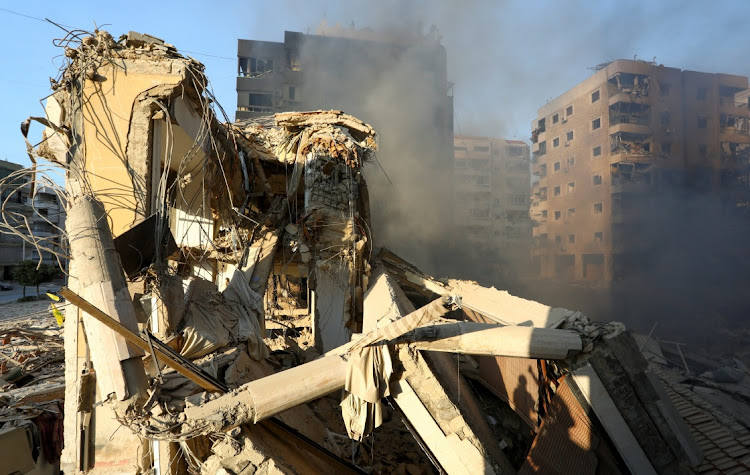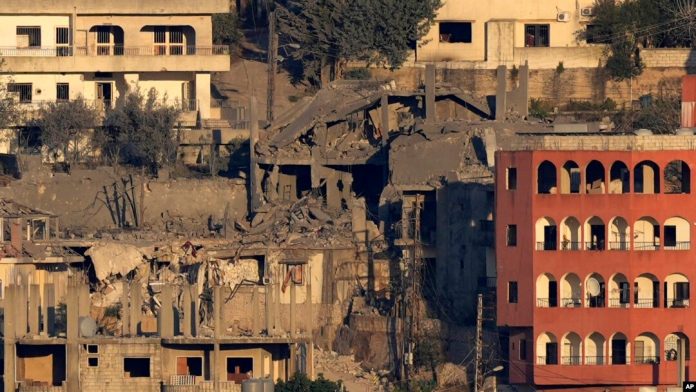Israel’s intensified military campaign in southern Lebanon has led to the widespread destruction of numerous towns and villages, with recent satellite imagery showing the drastic changes across the region. Imagery from Planet Labs Inc., analyzed by Reuters, captures a stark contrast between the vibrant neighborhoods and lush green landscapes from as recently as last year and the desolate, bomb-ravaged terrain that exists today. Among the hardest-hit areas are historic towns from Kfarkela to Labbouneh, including Meiss al-Jabal and Mhaibib, many of which have stood for hundreds of years, now reduced to rubble-strewn wastelands. The bombardment and resulting displacement of more than 1.2 million Lebanese civilians mark some of the most severe impacts of the escalating Israel-Hezbollah conflict in years, with Lebanon reporting over 2,600 casualties, a majority occurring in the past month alone.

This campaign, marked by thousands of airstrikes and artillery bombardments, reflects Israel’s stated goal to neutralize Hezbollah’s alleged military presence embedded within civilian areas in these border towns. According to Israeli military spokesperson Daniel Hagari, these operations aim to “push Hezbollah away from the border, dismantle its capabilities, and eliminate threats to Israel’s northern residents.” Israel contends that Hezbollah has converted many civilian areas into fortified strongholds, concealing weapons, explosives, and military personnel within residential neighborhoods. Israel’s intensified strikes include ground incursions along Lebanon’s mountainous southern border, with its troops engaging in frequent clashes with Hezbollah fighters, according to a source familiar with Israeli operations. This source added that Israel has “learned lessons” from the 2006 conflict with Hezbollah, which saw Israeli forces ambushed from hilltop villages. This experience has influenced their current strategy of heavily targeting strategically located villages to allow for freer movement and prevent future ambushes.
Residents of southern Lebanon, however, have firmly disputed Israel’s assertion that these areas serve as combat zones for Hezbollah. Towns like Meiss al-Jabal and Kfarkela, which were previously bustling with community life, have become unrecognizable landscapes of craters and destruction. Abdulmonem Choukeir, the mayor of Meiss al-Jabal, expressed dismay at the scale of devastation, lamenting, “There are beautiful old homes, hundreds of years old. Thousands of artillery shells have hit the town, hundreds of airstrikes. Who knows what will still be standing at the end?” These villages are home to tightly-knit communities, and for many, their destruction goes beyond a loss of property, threatening centuries-old cultural and social ties that residents fear may never be restored.

Reuters compared satellite images taken in October 2023 to those taken in September and October 2024, revealing significant, visible damage to the villages. Kfarkela’s main road, once lined with homes and greenery, now appears as a pathway bordered by white splotches, indicating widespread demolition. In Meiss al-Jabal, a large section near the town center has been completely leveled, transforming what was once a densely populated neighborhood into an expanse of rubble. Similarly, Mhaibib, located near the U.N.-demarcated Blue Line between Israel and Lebanon, has seen significant devastation, with structures blown apart in simultaneous explosions that reportedly indicated the presence of explosive devices.
For Lebanon, the humanitarian toll of the conflict has been severe, with the government estimating over 2,600 deaths and hundreds of thousands displaced from border villages, unable to return to their homes due to the conflict’s ongoing nature. Lebanese authorities reported that Israel’s forces have launched 3,809 attacks across the area over the last year, turning much of southern Lebanon’s rural landscape into a war zone. For displaced residents, the separation from their homes has been especially difficult, as they remain uncertain of the status of their properties and communities.
In addition to the physical destruction, the conflict has taken a significant toll on Lebanon’s cultural heritage, particularly in areas with historic and artistic significance. In the village of Odaisseh, for example, one family’s home that doubled as an art house and cultural center was among those recently destroyed. The family of renowned Lebanese artist Abdel-Hamid Baalbaki has preserved his artwork and more than 1,000 books in the family house for decades, only to see it demolished amid the conflict. Abdel-Hamid’s son, Lubnan Baalbaki, a prominent conductor, expressed deep sorrow at the loss, noting that the house was a well-known cultural center within the community, a place that once celebrated art and knowledge. “We’re a family of artists. My father is well-known, and our home was a known cultural home. We were trying to reassure ourselves with that thought,” Baalbaki told Reuters, adding that the destruction felt like an erasure of their family’s legacy. He vehemently denied that any military equipment was ever housed on the property, pointing out, “If you have such high-level intelligence that you can target specific military figures, then you know what’s in that house. It was an art house. We are all artists. The aim is to erase any sign of life.”

The extensive destruction in Lebanon has drawn concern and condemnation from international human rights organizations, which have called for restraint and urged both Israel and Hezbollah to minimize civilian harm. U.N. peacekeepers, stationed in the region for decades, have also observed the conflict’s escalation with mounting unease. According to experts such as Jon Alterman from the Center for Strategic and International Studies (CSIS), Israel’s latest military strategy reflects an organized approach designed to prevent Hezbollah’s entrenchment along the border, creating a buffer zone to reduce the threat to northern Israel. Seth Jones, also with CSIS, previously noted that Hezbollah has historically used southern Lebanese towns as staging points for rocket attacks into Israel, prompting Israel’s intense focus on these areas.
For many Lebanese displaced by the conflict, the uncertainty of their return and the devastation of their hometowns weigh heavily. The damage extends beyond homes and businesses; it threatens to erase generations of cultural history, community bonds, and familial legacies. As the region continues to experience heightened conflict, residents and displaced families are left hoping for a resolution that will allow them to return and rebuild the lives and heritage now lying in ruins.




